Foundations of the Prolific Film Industry:
Films really blossomed in the 1920s, expanding upon the foundations of film from earlier years. Most US film production at the start of the decade occurred in or near Hollywood on the West Coast, although some films were still being made in New Jersey and in Astoria on Long Island (Paramount). By the mid-20s, movies were big business (with a capital investment totaling over $2 billion) with some theatres offering double features. By the end of the decade, there were 20 Hollywood studios, and the demand for films was greater than ever. Most people are unaware that the greatest output of feature films in the US occurred in the 1920s and 1930s (averaging about 800 film releases in a year) - nowadays, it is remarkable when production exceeds 500 films in a year.
 Throughout most of the decade, silent films were the predominant product of the film industry, having evolved from vaudevillian roots. But the films were becoming bigger (or longer), costlier, and more polished. They were being manufactured, assembly-line style, in Hollywood's 'entertainment factories,' in which production was broken down and organized into its various components (writing, costuming, makeup, directing, etc.).
Throughout most of the decade, silent films were the predominant product of the film industry, having evolved from vaudevillian roots. But the films were becoming bigger (or longer), costlier, and more polished. They were being manufactured, assembly-line style, in Hollywood's 'entertainment factories,' in which production was broken down and organized into its various components (writing, costuming, makeup, directing, etc.).
Even the earliest films were organized into genres or types, with instantly-recognizable storylines, settings, costumes, and characters. The major genre emphasis was on swashbucklers, historical extravaganzas, and melodramas, although all kinds of films were being produced throughout the decade. Films varied from sexy melodramas and biblical epics by Cecil B. DeMille, to westerns (such as Cruze's The Covered Wagon (1923)), horror films, gangster/crime films, war films, the first feature documentary or non-fictional narrative film (Robert Flaherty's Nanook of the North (1922)), romances, mysteries, and comedies (from the silent comic masters Chaplin, Keaton, and Lloyd).
The Major Film Studios: The Big Five
1920-1930 was the decade between the end of the Great War and the Depression following the Stock Market Crash. Film theaters and studios were not initially affected in this decade by the Crash in late 1929. The basic patterns and foundations of the film industry (and its economic organization) were established in the 1920s. The studio system was essentially born with long-term contracts for stars, lavish production values, and increasingly rigid control of directors and stars by the studio's production chief and in-house publicity departments. After World War I and into the early 1920s, America was the leading producer of films in the world - using Thomas Ince's "factory system" of production, although the system did limit the creativity of many directors. Production was in the hands of the major studios (that really flourished after 1927 for almost 20 years), and the star system was burgeoning.
Originally, in the earliest years of the motion picture industry, production, distribution, and exhibition were separately controlled. When the industry rapidly grew, these functions became integrated under one directorship to maximize profits, something called vertical integration. There were eight major (and minor) studios (see below) that dominated the industry. They were the ones that had most successfully consolidated and integrated all aspects of a film's development. By 1929, the film-making firms that were to rule and monopolize Hollywood for the next half-century were the giants or the majors, sometimes dubbed The Big Five. They produced more than 90 percent of the fiction films in America and distributed their films both nationally and internationally. Each studio somewhat differentiated its products from other studios.
| Warner Bros. Pictures, incorporated in 1923 by Polish brothers (Jack, Harry, Albert, and Sam); in 1925, Warner Brothers merged with First National, forming Warner Bros.-First National Pictures; the studio's first principal asset was Rin Tin Tin; became prominent by 1927 due to its introduction of talkies (The Jazz Singer (1927)) and early 30s gangster films; it was known as the "Depression studio"; in the 40s, it specialized in Bugs Bunny animations and other cartoons |  Warner Bros. | |
| Adolph Zukor's Famous Players (1912) and Jesse Lasky'sFeature Play - merged in 1916 to form Famous Players-LaskyCorporation; it spent $1 million on United Studios' property (on Marathon Street) in 1926; the Famous Players-Lasky Corporation became Paramount studios in 1927, and was officially named Paramount Pictures in 1935; its greatest silent era stars were Mary Pickford and Douglas Fairbanks, and Rudolph Valentino; Golden Age stars included Mae West, W.C. Fields, Bing Crosby, Bob Hope, and director Cecil B. DeMille | 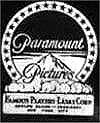 Famous Players-Lasky (Paramount) | |
| RKO (Radio-Keith-Orpheum) Pictures, evolved from the Mutual Film Corporation (1912), was established in 1928 as a subsidiary of RCA; it was formed by RCA, Keith-Orpheum Theaters, and the FBO Company (Film Booker's Organization) - which was owned by Joseph P. Kennedy (who had already purchased what remained of Mutual); this was the smallest studio of the majors; kept financially afloat with top-grossing Astaire-Rogers musicals in the 30s, King Kong (1933), andCitizen Kane (1941); at one time, RKO was acquired by eccentric millionaire Howard Hughes | 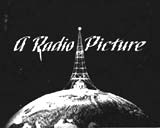 RKO | |
| Marcus Loew of Loew's, Inc., was the parent firm of what eventually became Metro-Goldwyn-Mayer. Metro Pictures Corporation was a production company founded in 1916 by Richard A. Rowland and Louis B. Mayer. In 1918, Mayer left this partnership to start up his own production company in 1918, called Louis B. Mayer Pictures. In 1920, Metro Pictures Corporation (with its already-acquired Goldwyn Pictures Corporation) was purchased by early theater exhibitor Marcus Loew of Loew's Inc. In another acquisition, Loew merged his 'Metro-Goldwyn production company with Louis B. Mayer Pictures. So, in summary, MGM, first named Metro-Goldwyn Pictures, was ultimately formed in 1924 from the merger of three US film production companies: Metro Pictures Corporation (1916),Goldwyn Pictures Corporation (1917), and the Louis B. Mayer Pictures Company (1918); Irving Thalberg (nicknamed the 'boy wonder') was head of production at MGM from 1924 until his death in 1936; the famous MGM lion roar in the studio's opening logo was first recorded and viewed in a film in 1928; its greatest early successes were The Big Parade (1925), Broadway Melody (1929), Grand Hotel (1932), Mutiny on the Bounty (1935), A Night at the Opera (1935), The Good Earth (1937),Gone With the Wind (1939), The Wizard of Oz (1939), as well as Tarzan films, Tom and Jerry cartoons, and stars such as Clark Gable, Greta Garbo, and Spencer Tracy | 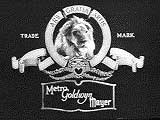 Metro-Goldwyn-Mayer | |
| Fox Film Corporation/Foundation, founded in 1912 by NY nickelodeon owner William Fox (originally a garment industry worker), was first known for Fox Movietone news and then B-westerns; its first film was Life's Shop Window (1914); it later became 20th-Century Fox, formed through the 1935 merger of20th Century Pictures Company (founded in 1933 by Darryl F. Zanuck) and Fox; it became famous for Shirley Temple films in the mid-30s and Betty Grable musicals in the 40s |  Movietone Newsreels   20th Century Pictures 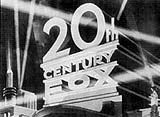 20th-Century Fox |
The Big-Five studios had vast studios with elaborate sets for film production. They owned their own film-exhibiting theatres (about 50% of the seating capacity in the US in mostly first-run houses in major cities), as well as production and distribution facilities. They distributed their films to this network of studio-owned, first-run theaters (or movie palaces), mostly in urban areas, which charged high ticket prices and drew huge audiences. They requiredblind or block bookings of films, whereby theatre owners were required to rent a block of films (often cheaply-made, less-desirable B-pictures) in order for the studio to agree to distribute the one prestige A-level picture that the theatre owner wanted to exhibit. This technique set the terms for a film's release and patterns of exhibition and guaranteed success for the studio's productions. [Monopolistic studio control lasted twenty years until the late 1940s, when a federal decree (in U.S. vs. Paramount) ordered the studios to divest their theatres, similar to the rulings against the MPPC - the Edison Trust.]
The Minor Film Studios: The Little Three
Three smaller, minor studios were dubbed The Little Three, because each of them lacked one of the three elements required in vertical integration - owning their own theaters:
| 1. | Universal Pictures, (or Universal Film Manufacturing Co), founded by Carl Laemmle in 1912; formed from a merger of Laemmle's own IMP - Independent Motion Picture Company (founded in 1909) with Bison 101, the U. S. production facilities of French studio Éclair, Nestor Film Co., and several other film companies; its first successes were W.C. Fields and Abbott and Costello comedies, the Flash Gordon serial, and Woody Woodpecker cartoons | 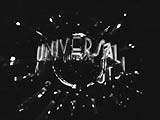 Universal |
| 2. | United Artists, formed in 1919 by movie industry icons Mary Pickford, Douglas Fairbanks, Sr., Charlie Chaplin, and director D.W. Griffith as an independent company to produce and distribute their films; United Artists utilized an 18-acre property owned by Pickford and Fairbanks, known as the Pickford-Fairbanks Studio, and later named United Artists Studio in the 1920s | 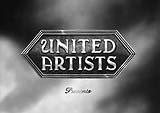 United Artists |
| 3. | Columbia Pictures, originally the C.B.C. Film Sales Company in 1920 founded by brothers Jack and Harry Cohn, and Joseph Brandt, and officially named Columbia in 1924; their studios opened at the old location of Christie-Nestor Studios; established prominence with It Happened One Night (1934), Rita Hayworth films, Lost Horizon (1937), The Jolson Story (1946), andBatman serials. | 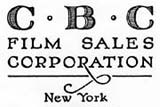 CBC Film Sales 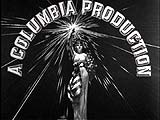 Columbia Pictures (1924-1936) 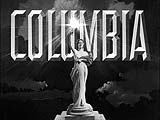 Columbia |
No comments:
Post a Comment